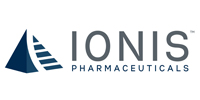AZ grabs licence as Ionis NASH drug heads to the clinic

AstraZeneca has licensed in a drug from Ionis Pharmaceuticals for fatty liver disease, a therapy area tipped as a new multi-billion dollar market.
This is the third drug AZ has licensed in as part of strategic collaboration with the antisense therapeutics specialist , which originally began in 2012 in oncology and was later expanded to cover cardiovascular, metabolic, and renal diseases.
Only last month AZ licensed in a drug from Ionis to treat kidney disease, in a deal worth up to $330 million.
The UK-headquartered pharma company will pay $30m upfront to license in the drug, IONIS-AZ6-2.5-LRx, or AZD2693, following advancement of the drug into clinical development for non-alcoholic steatohepatitis (NASH).
AZ will be responsible for further development and marketing of AZD2693, and could pay Ionis another $300 million in additional development and regulatory payments, plus tiered royalties up to the low teens from sales.
Antisense drugs contain non-coding strands of mRNA that block the formation of defective proteins that lead to disease.
According to Ionis, AZD2693 incorporates its “Generation 2.5” chemistry, providing an up to 10-fold increase in potency over its second generation drugs.
It is also conjugated with a ligand – a chemical structure that can increase the uptake of the drug in a particular tissue.

Brett Monia
Brett Monia, chief operating officer and senior vice president of antisense drug discovery and translation at Ionis, said: “We are pleased with how quickly we moved IONIS-AZ6-2.5-LRx from target validation into development, exemplifying the efficiency of our antisense platform. AstraZeneca has played a strategic role in advancing this programme forward by providing both preclinical and development expertise in NASH that has contributed to the rapid advance of this drug into development. We look forward to AstraZeneca moving this programme swiftly into clinical testing and ultimately to the market."
The new deal adds to existing collaborations, including AZD8233, a drug inhibiting an undisclosed target in cardiovascular disease, paying $20 million up front and $200 million.
The companies are also developing a drug for treatment of cancer from the earlier stages of the tie-up.
Ionis’ big rival in antisense therapeutics is Alnylam, which in February signed a deal with Regeneron to research treatments for NASH.
Intercept is among the leading companies to develop a NASH drug with its Ocaliva (obeticholic acid), but there have been safety concerns because of a series of patient deaths in its already-approved use of primary biliary cholangitis.
Gilead, Shire and Novartis are among the other pharma companies chasing treatments for NASH.
Alnylam filed its first RNAi therapy with the FDA earlier this year, asking the regulator to review patisiran for the rare disease Hereditary ATTR Amyloidosis.
Ionis’ pipeline of antisense drugs is also beginning to produce results – a separate alliance with Biogen resulted in development and approval of Spinraza (nusinersen), approved for spinal muscular atrophy.









